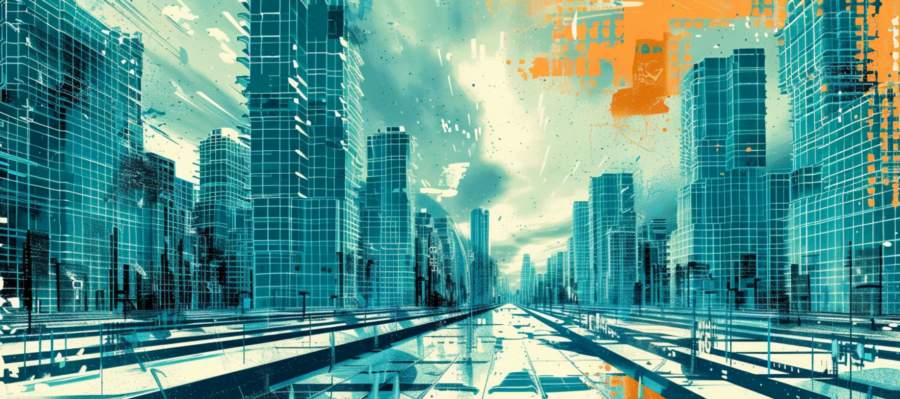Imagine a world where design had an amnesia episode, completely forgetting nature ever existed. Skyscrapers sprawl endlessly, every surface gleams with synthetic gloss, and the closest thing to a tree is the plastic potted variety in the corner of a high-rise corporate lobby. Welcome to our eco-dystopia, a tongue-in-cheek yet sobering exploration of what might happen if designers suddenly ditched green for grey.
Urban Jungles Without the Jungles
As cities expand, they often engulf the green spaces that once offered a breath of fresh air amid the concrete. In our hypothetical nightmare, cities have evolved into vast expanses of steel and glass, where the only ‘forests’ are networks of digital billboards streaming endless advertisements. Here, children grow up recognizing company logos before they can name even one local bird species.
Rivers of Plastic, Oceans of Concrete
Water bodies fare no better in this world devoid of ecological empathy. Rivers once lined with lush vegetation now host fleets of synthetic barges carrying goods between mega-cities. The oceans, vast concrete basins, facilitate super-efficient trade routes, with marine life tales relegated to mythology. Beaches, those that remain, are manicured with perfect, pollution-tolerant, plastic sand.
Air: The Premium Commodity
Air quality in our eco-dystopia has transformed from a public good to a luxury commodity. High-rise dwellers at the top get ‘premium’ air pumped straight into their abodes, while those at lower levels must make do with whatever wafts upwards. The smog is so dense that sunrise and sunset are now just concepts taught in history classes, not phenomena experienced in everyday life.
Green Spaces? More Like Screen Spaces
Parks and natural reserves have been repurposed as ‘screen spaces’—areas where virtual reality headsets provide simulated nature experiences. These spots are frequented by those seeking a quick escape from urban monotony, offering virtual walks through ancient forests or dives along coral reefs that no longer exist outside of hard drives and memory chips.
Synthetic Animals: The New Wildlife
In a world that has turned its back on natural ecosystems, wildlife consists of biomechanical creatures designed for both form and function. These synthetic animals, from robotic bees that pollinate artificial plants to mechanical birds that chirp pre-recorded songs, are common sights. Their primary role is not to sustain biodiversity but to remind humans of what once was, serving as moving decor in a landscape devoid of true life.
Fashion Without Fibers
Natural fibers are a thing of the past in our eco-dystopia. Cotton, wool, and silk have been replaced by petroleum-based fabrics. These materials are celebrated for their durability and versatility, but they come at a cost: they’re entirely non-biodegradable. The fashion industry, unfettered by environmental concerns, produces clothing that might last for decades, reducing the need for frequent purchases but at the expense of ever-growing landfill sites.
Food: Engineered for Efficiency
Agriculture has been optimized to such an extent that food is now engineered for shape, size, and stackability rather than taste or nutritional value. Apples are square, tomatoes are perfectly cylindrical, and every pea is exactly the same diameter. This makes packing, shipping, and storing food remarkably efficient, although dining out now feels more like assembling nutritional Lego blocks than enjoying a meal.
Reconsidering Our Course
While this glimpse into a possible future might seem extreme, it serves as a stark reminder of the importance of sustainable design practices. As designers, architects, city planners, and consumers, we have the power and the responsibility to influence how our environment evolves. Choosing materials wisely, designing with nature in mind, and advocating for green spaces are not just aesthetic decisions—they are essential to preserving our planet.
Final Thoughts on Our Design Choices
This vision of eco-dystopia, though fictional, highlights the potential consequences of ignoring our environmental responsibilities. By integrating sustainability into our design principles, we can ensure that future generations inherit a world where nature and human innovation coexist harmoniously, rather than in conflict. Let’s design not just for today, but for the world of tomorrow.

